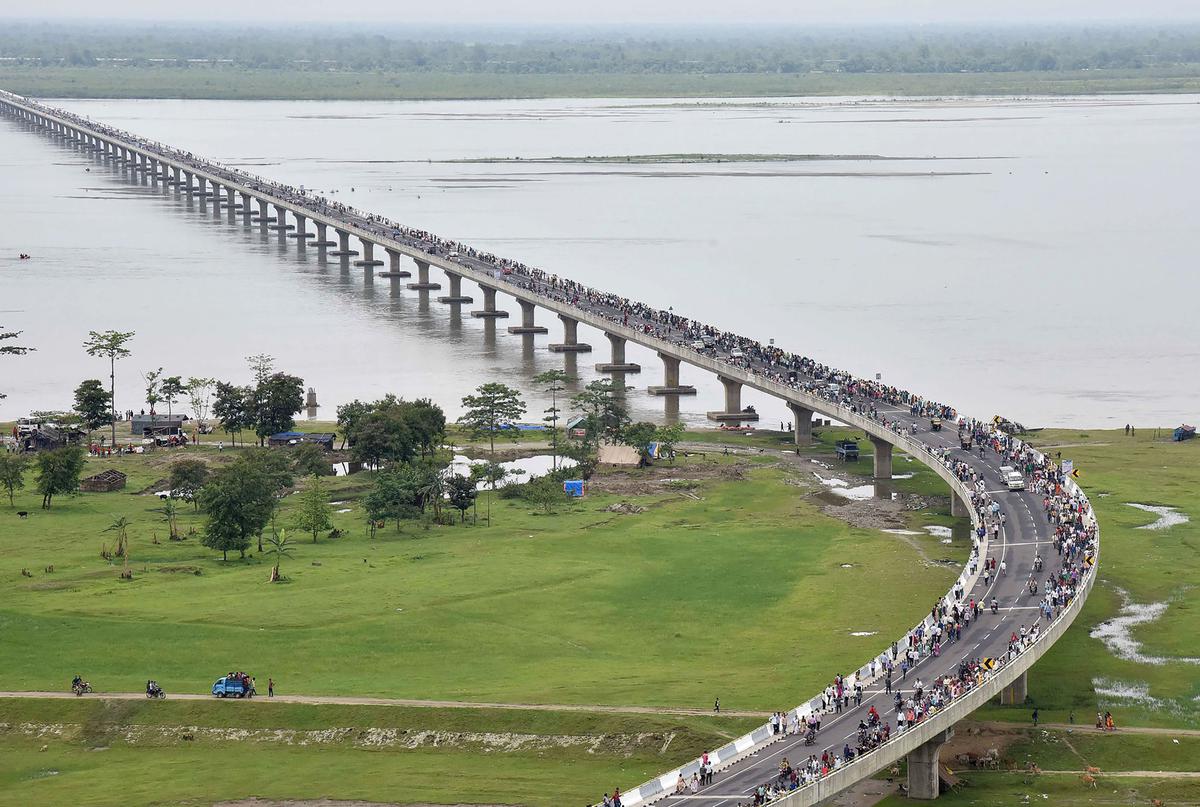The third India-Japan Intellectual Dialogue, organised by the Asian Confluence (ASCON) in Tripura, provided an excellent opportunity to analyse experts’ and policymakers’ shifting views. It demonstrated that the present decade may bring about game-changing shifts in the northeast, bringing the troika of Bangladesh, India, and Japan closer together.

Significant developments have occurred in North East India.
- The northeastern area of India (Arunachal Pradesh, Assam, Manipur, Meghalaya, Mizoram, Nagaland, Tripura, and Sikkim) is changing dramatically.
- It has overcome many (but not all) security issues and is now focusing on economic development.
- Political shifts have been beneficial. The wide web of ties with bordering Bangladesh is as well. Furthermore, Japan has emerged as a key development partner for both India and Bangladesh.
Japan’s historical relations with India’s North Eastern area
- Cultural relations: The North Eastern region of India and Japan have strong cultural ties, with Buddhism serving as a common thread that connects the two countries.
- World conflict II: India’s North Eastern area played a critical part in World War II, with the Battles of Imphal and Kohima regarded as turning moments in the conflict. The Japanese army had marched into the area and was fighting hard against the Allied forces.
- Following India’s independence, the North Eastern area remained mainly separated from the rest of the country. However, the Indian government began building roads and infrastructure to connect the region to the rest of the country in the 1950s. Japan has contributed to the region’s growth by assisting in the construction of the Dimapur-Imphal highway.
- Economic links: In recent years, there has been a greater emphasis on economic ties between India’s North Eastern area and Japan. Japan has made investments in the region’s infrastructure, including the Guwahati water supply project and the Northeast Road Network Connectivity Improvement Project.
- Improved connectivity between India’s North Eastern region and Japan is viewed as a major aspect in reinforcing the two regions’ historical relations. There have been discussions on establishing a direct flight between Guwahati and Tokyo in order to improve connectivity.
What exactly is Asian Confluence?
- Shillong, Meghalaya, India’s Asian Confluence is a think tank and cultural centre.
- It was founded in 2012 with the goal of developing and enhancing cultural and economic relations between India’s Northeastern region and Southeast Asian countries.
- The centre aims to foster debate and collaboration among academics, politicians, entrepreneurs, and civil society groups from around the area, with a special emphasis on connectivity, trade, investment, and tourist concerns.
- The Asian Confluence offers a variety of events, such as conferences, seminars, workshops, and cultural programmes, that bring professionals and stakeholders from various disciplines together to discuss and explore potential for collaboration and cooperation.
- In addition to fostering economic and cultural linkages, the institution aims to build a feeling of community and shared identity among the region’s different peoples.
Possibilities for Northeast India
- Deep Sea Port of Matarbari: With Japanese help, the development of the Matarbari Deep Sea Port in Bangladesh is intended to be a game changer for the region. To be economically feasible, the port must serve the demands of Bangladesh and India’s northeast, a population of 220 million people.
- Competitive advantage: To ensure that the new connectivity links are fully utilised and productive, regional industrial value chains and rapid industrialization in sectors where the northeast has a competitive edge will be critical.
- Natural resources and strategic position: The region’s natural resources and strategic location make it an appealing destination for investors in a variety of industries, including agro-processing, man-made fibres, handicrafts, two-wheeler assembly, mobile phone assembly, and pharmaceuticals.
What are the Obstacles?
- Inadequate investment: Japan’s role as a sole investor in the northeast is untenable. Indian firms must also invest, and India must relax limitations on investment from Bangladesh.
- Security issues: While the northeastern region has solved a number of security issues, not all of them have been addressed.
- Infrastructural connectivity: While Bangladesh and India have made strides in rebuilding pre-1965 infrastructural connectivity, other nations in the region must follow suit.
- Concerns about the environment: As industrialization and development proceed, it is necessary to guarantee that environmental concerns are addressed and that sustainability is prioritised.
- BIMSTEC is being overlooked: When discussing regional cooperation and integration, it appears that little attention is paid to the self-defeating Bay of Bengal Initiative for Multi-Sectoral Technical and Economic Cooperation (BIMSTEC).
What actions should be taken?
- Policy convergence is limited: To meet the region’s difficulties, policy convergence must be expanded.
- Closer economic ties are required: The governments of Bangladesh, India, and Japan should create closer economic ties.
- Investment: Indian firms, like Japanese firms, must invest in the northeast. India should also relax limitations on investment from Bangladesh.
- Infrastructure connectivity: Bangladesh has facilitated tremendous connectivity with India, but it now need reciprocity from other countries, mainly India, in order to be better connected with its neighbours, which include Nepal, Bhutan, and Myanmar.
- Leadership is required: The goal of connecting a substantial portion of South Asia with Southeast Asia necessitates an astute pilot. Bangladesh, India, and Japan may provide this leadership.
@the end
Bangladesh, India, and Japan (BIJ) may give wise leadership in connecting a substantial portion of South Asia with Southeast Asia. A BIJ Forum at the level of Foreign Ministers should be established, which will be welcomed in the northeast. Economic cooperation should be strengthened between the three countries.
Source: https://www.thehindu.com/opinion/op-ed/a-new-troika-for-indias-northeast-region/article66770821.ece
